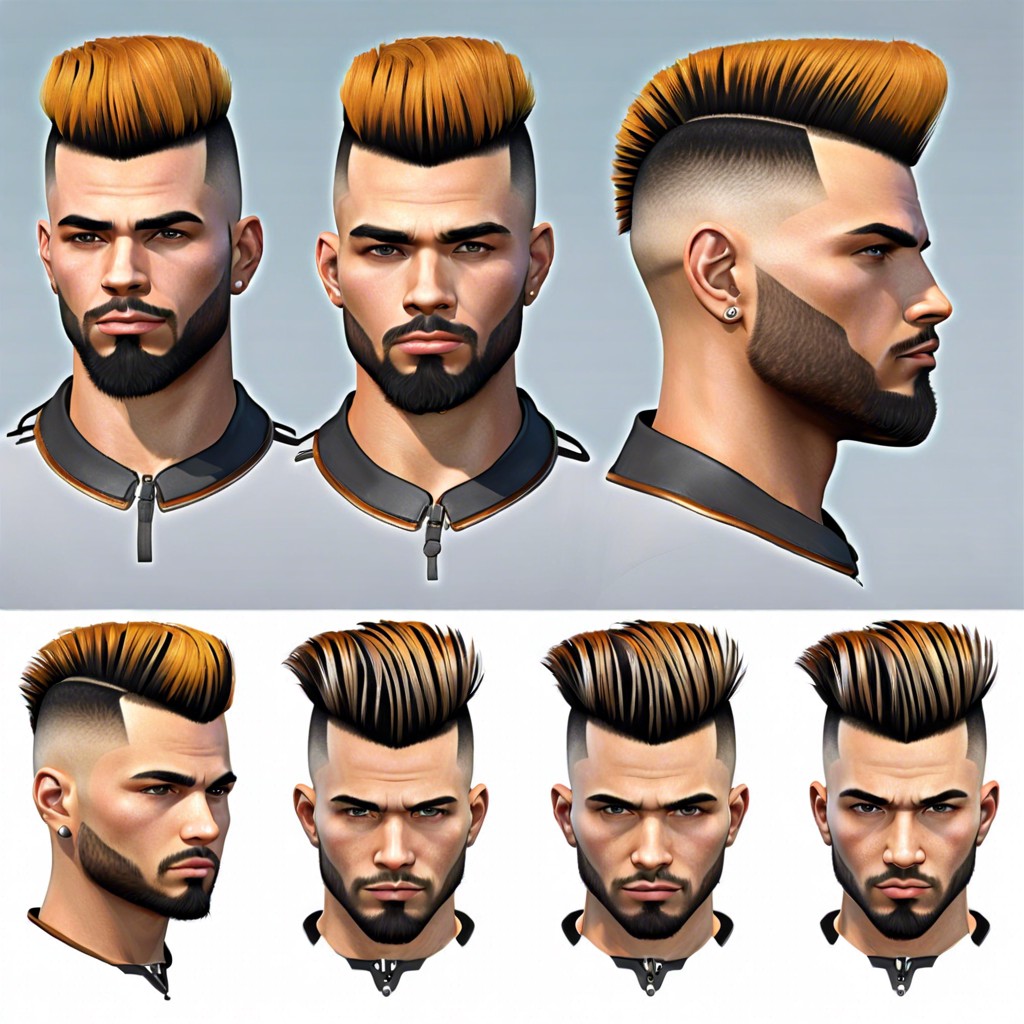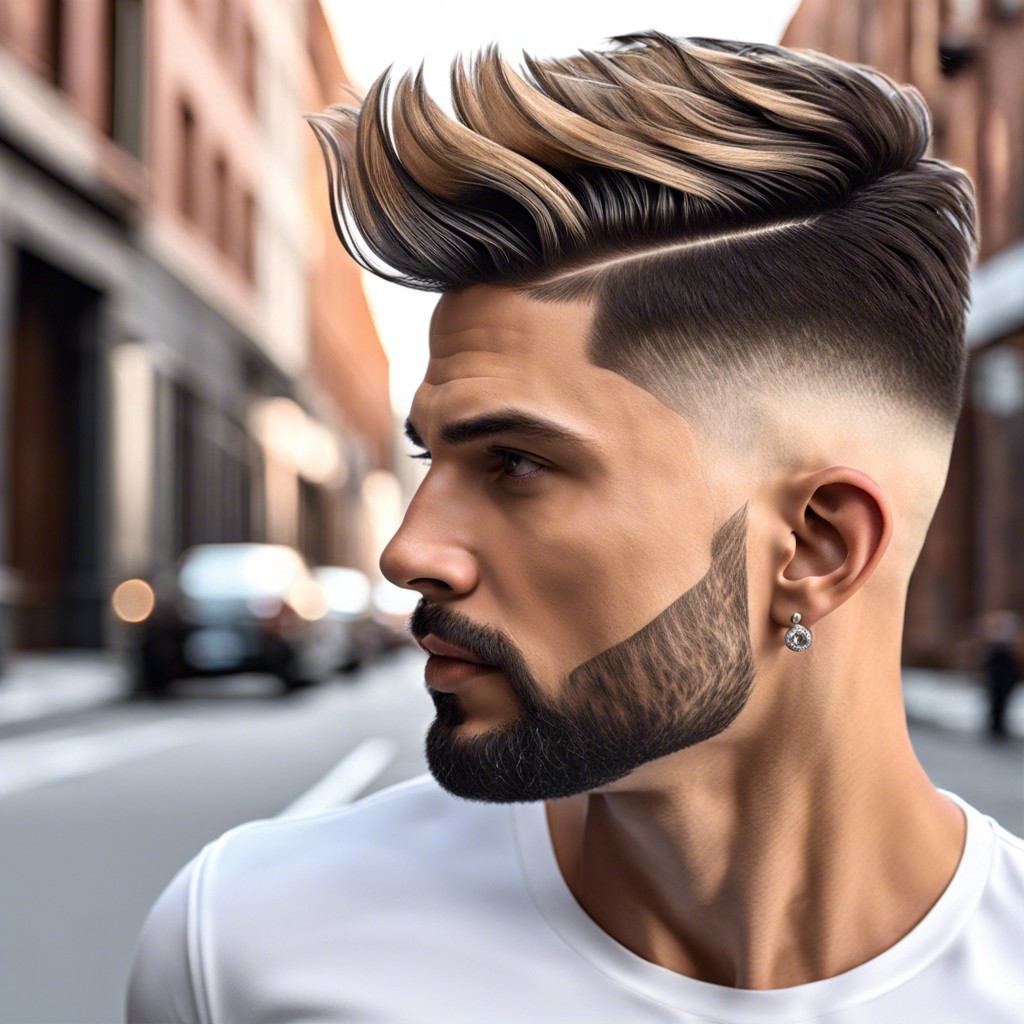Discover the various types of fades to find the perfect cut that complements your personal style and hair texture.
Regular Fade
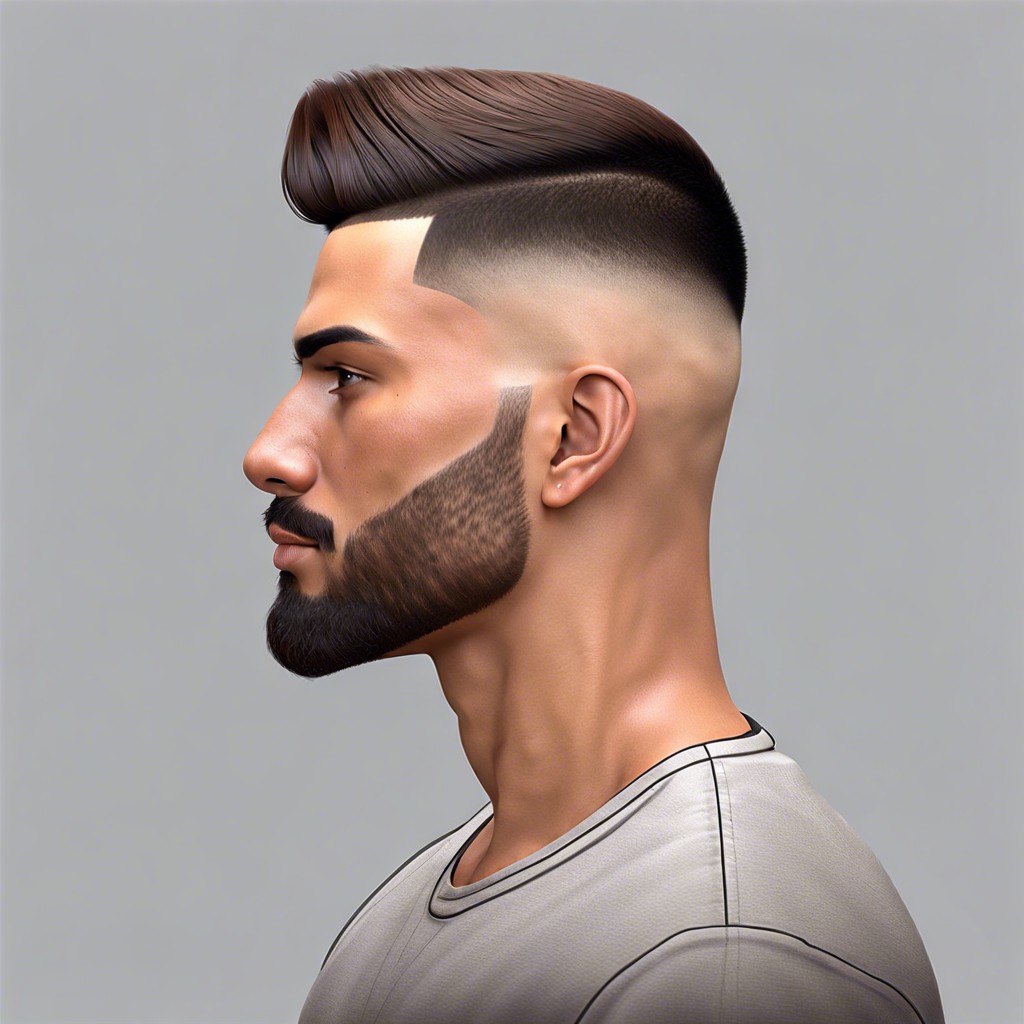
A regular fade is a subtle transition in hair length, usually starting above the ears and following a straight line around the head. This classic style is versatile, fitting both formal occasions and casual settings. It provides a clean, professional look without being overly dramatic, making it a go-to choice for those new to fades.
High Fade
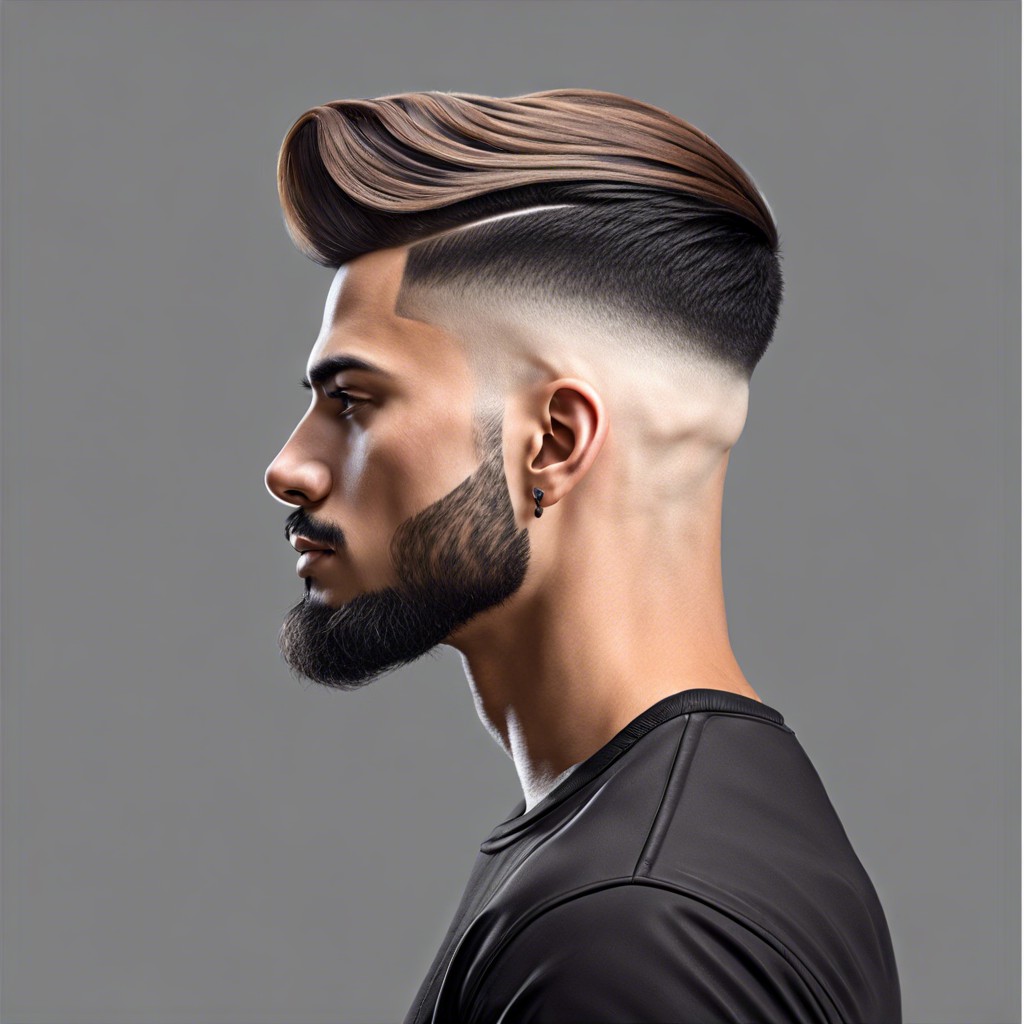
A high fade haircut starts the tapered cut right at the temples, providing a stark contrast between the top and the sides of the hair. It creates a bold, dramatic look that draws attention to the styling on top of the head. Ideal for those wanting to add an edgy, modern twist to their hairstyle, a high fade offers a clean, sharp outline to any look.
Low Fade
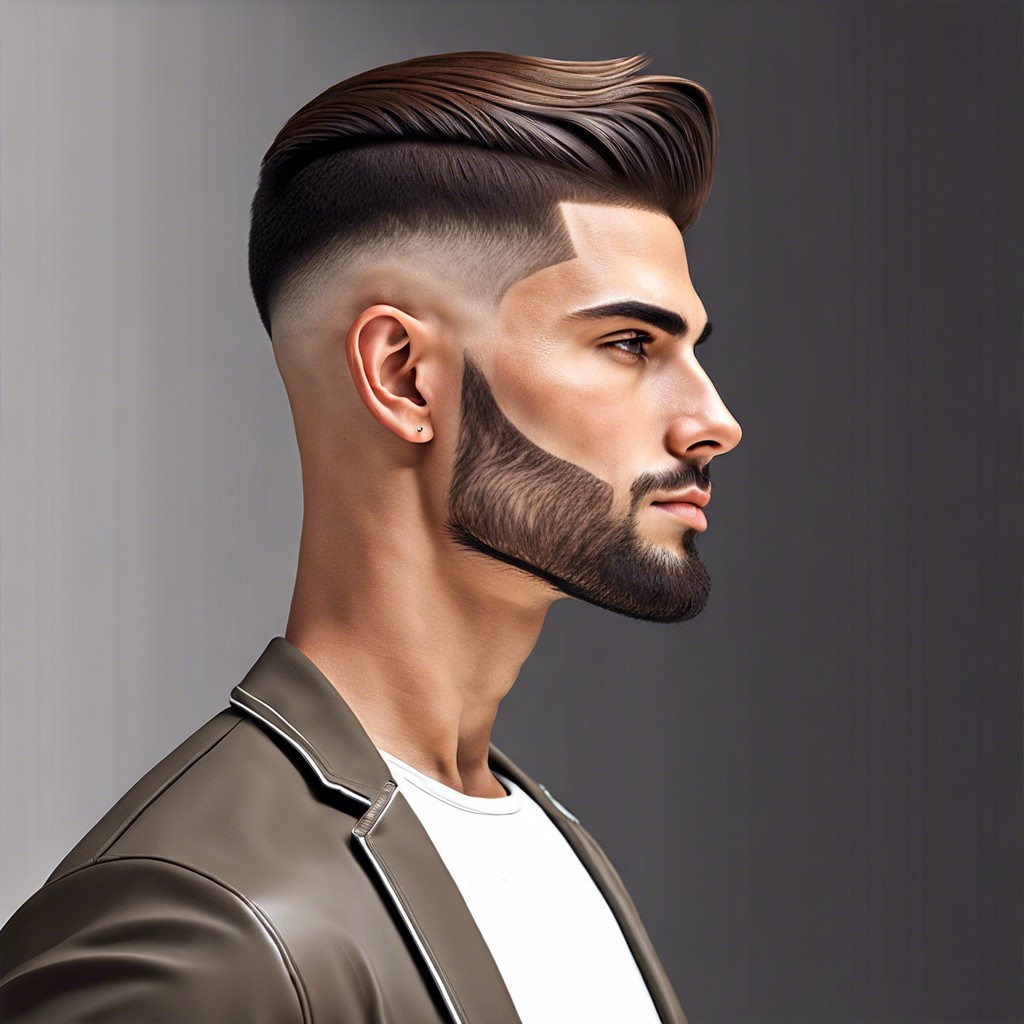
The low fade begins just above the ears and curves down toward the neckline, providing a subtle transition into shorter hair. It’s the go-to option for a more conservative, professional look that blends neatly with various hair lengths on top. Ideal for someone who wants a clean, defined hairstyle without drawing too much attention to the sides.
Mid Fade
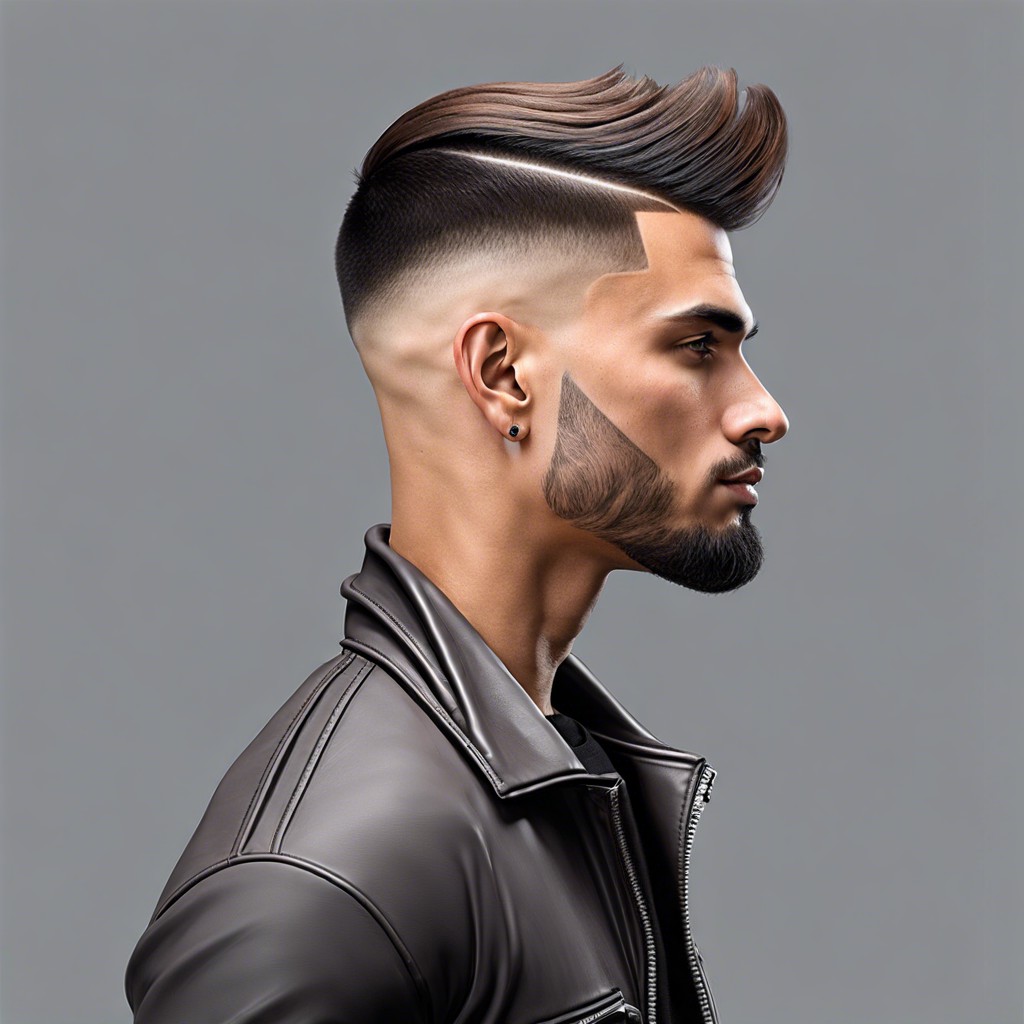
The mid fade strikes a perfect balance, starting halfway up the head, it’s a versatile choice that’s neither too bold nor too subtle. It seamlessly transitions from slightly longer hair up top to shorter lengths, providing a clean aesthetic that suits various hairstyles and face shapes. This fade works well for those who want a fashionable look without going to the extremes of high or low fades.
Taper Fade
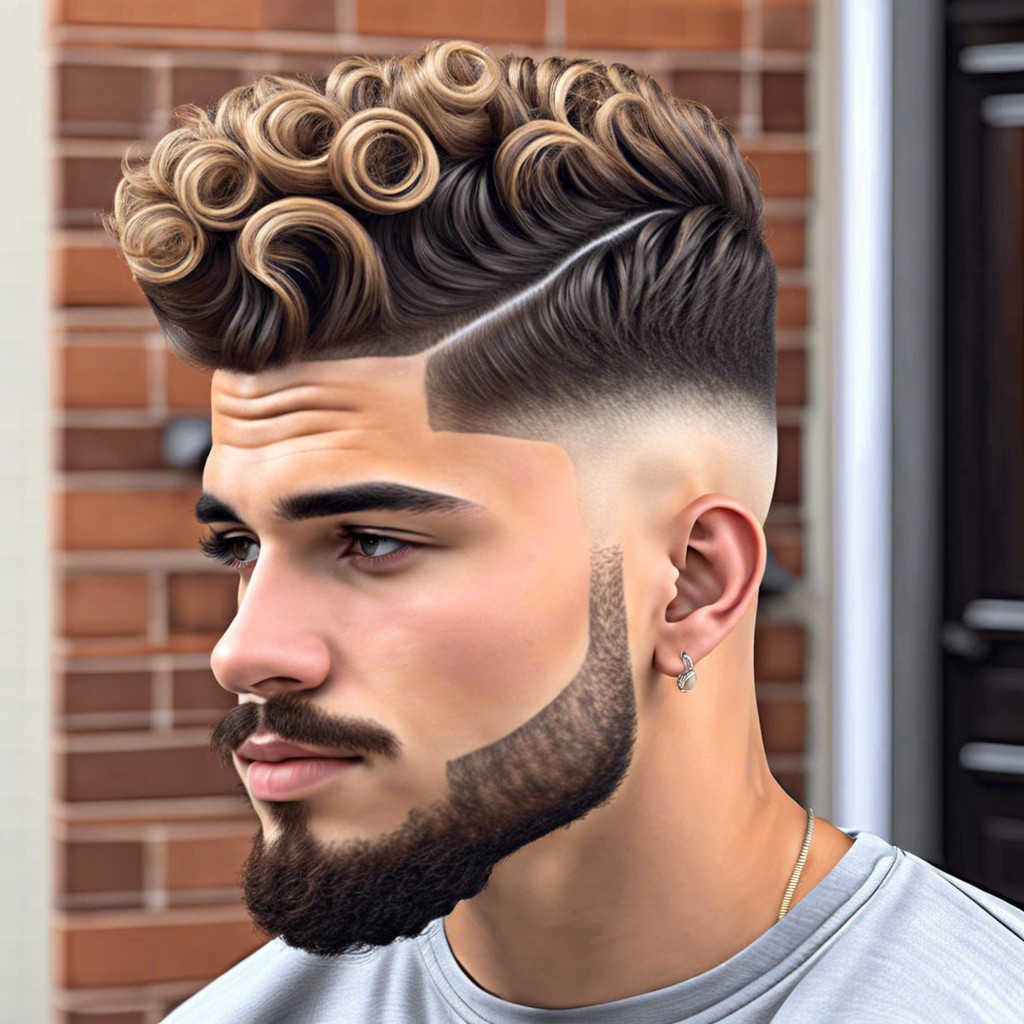
The taper fade blends the hair from the temples and neckline to various lengths, seamlessly transitioning from longer to shorter hair. It’s characterized by a more subtle and gradual fade than other types, making it suitable for both professional and casual settings. This versatile fade can be tailored to personal preference, offering different gradient levels for a customized and refined look.
Skin Fade
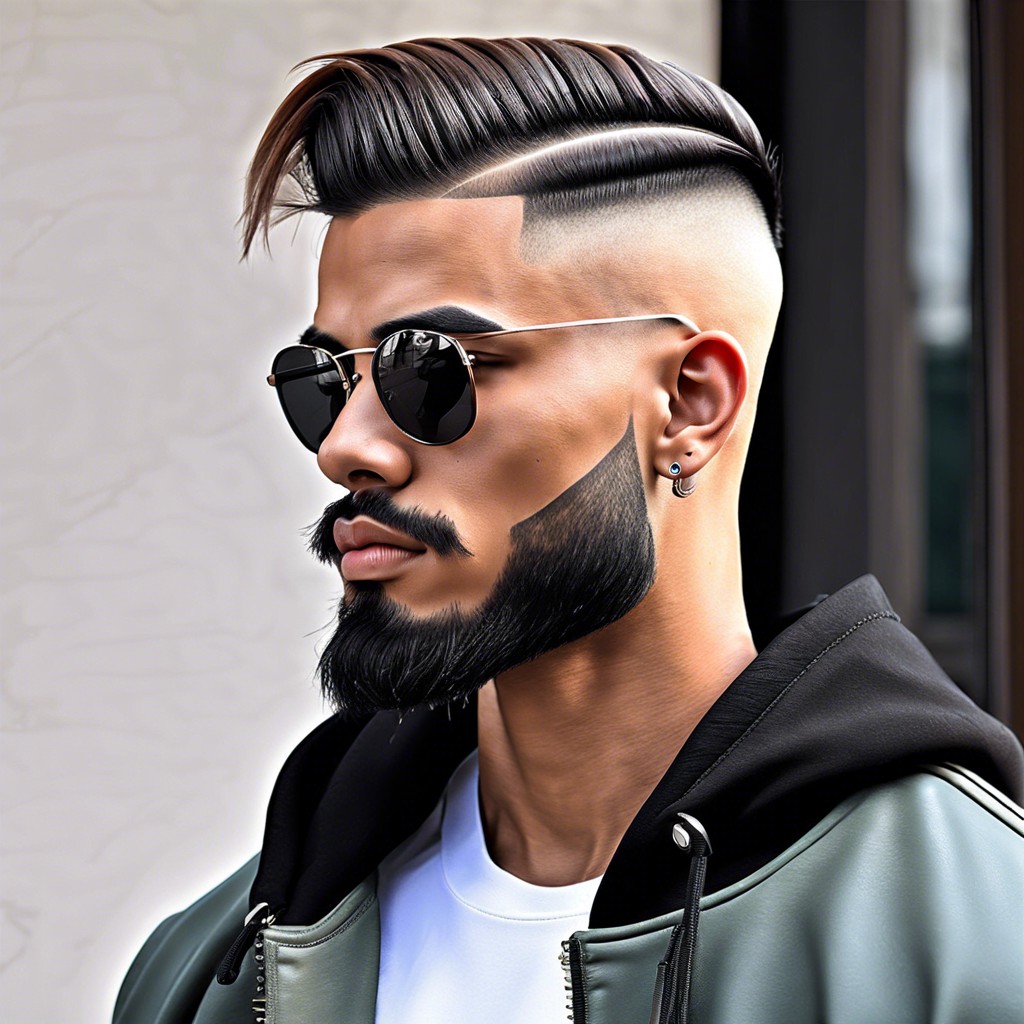
The skin fade is a stark, gradient shave that tapers to bare skin, showcasing precise and crisp transitions. It’s a daring choice that adds a modern edge to various hairstyles, often favored for its clean finish and sharp definition. This type of fade can dramatically highlight the hairstyle above, making it a popular option for those looking to make a bold statement with their hair.
Bald Fade

A bald fade, often synonymous with a skin fade, features a seamless gradient down to bare skin. It’s an audacious style that provides a stark contrast, particularly noticeable and edgy when paired with a thick beard. Ideal for those seeking a high-impact, low-maintenance look, it’s a statement cut that emphasizes sharp lines and showcases precision in barbering.
Drop Fade

The drop fade is characterized by an arc that drops behind the ear, giving a sleek curved taper. It adds a contemporary twist to the classic fade, often resulting in a more pronounced shape to the hairstyle. This type of fade can be particularly flattering as it follows the natural hairline and can create the illusion of more volume on top.
Temple Fade
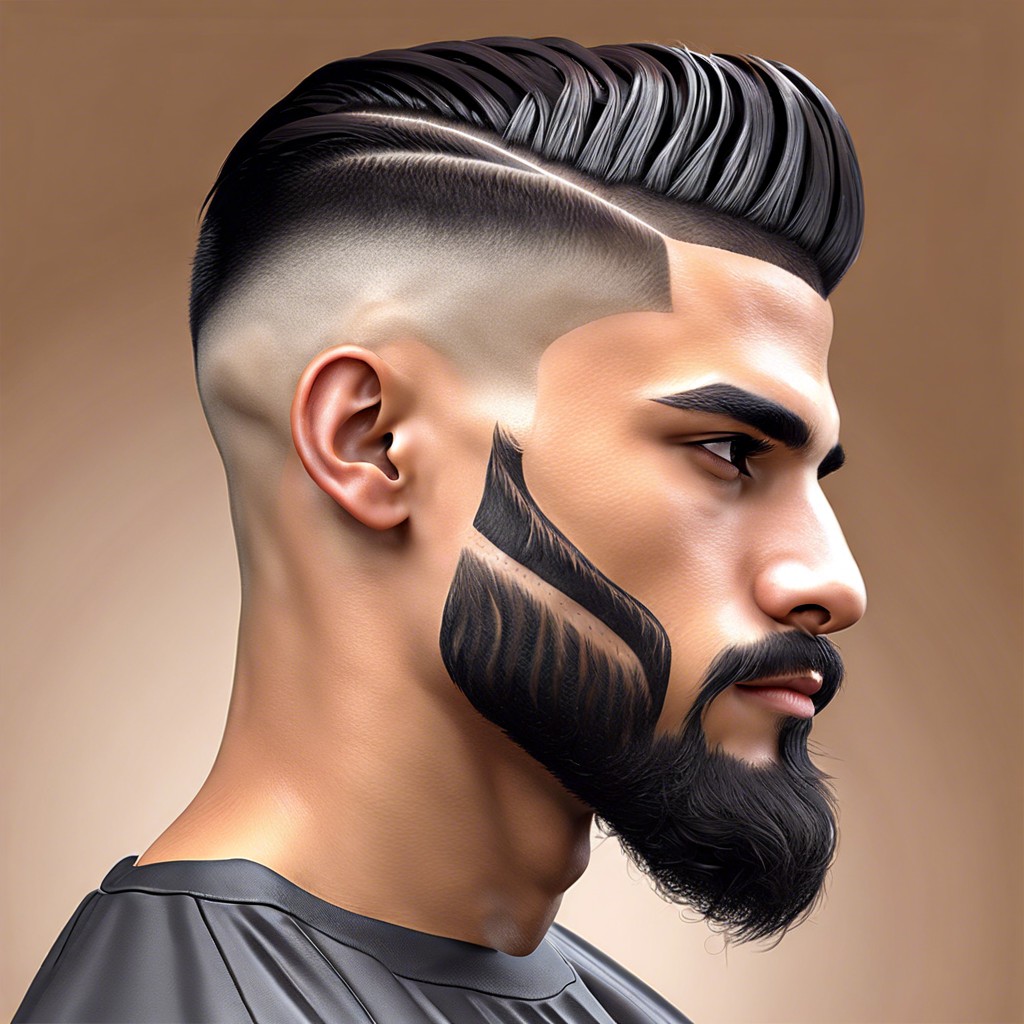
The temple fade, also known as the temp fade, is characterized by a sharp transition around the temples, where hair abruptly goes from short to even shorter. This style accentuates the temple area, offering a crisp edge that is popular in urban fashion. It’s a versatile choice, complementing a variety of hair textures and lengths, delivering a neat and contemporary look.
Scissor Fade

A scissor fade stands out for its softer, more natural transition compared to clipper work. It’s ideal for those seeking a textured, layered look without a stark contrast. This technique requires precision and skill, as the stylist meticulously blends the hair using scissors along the sides and back.
Undercut Fade
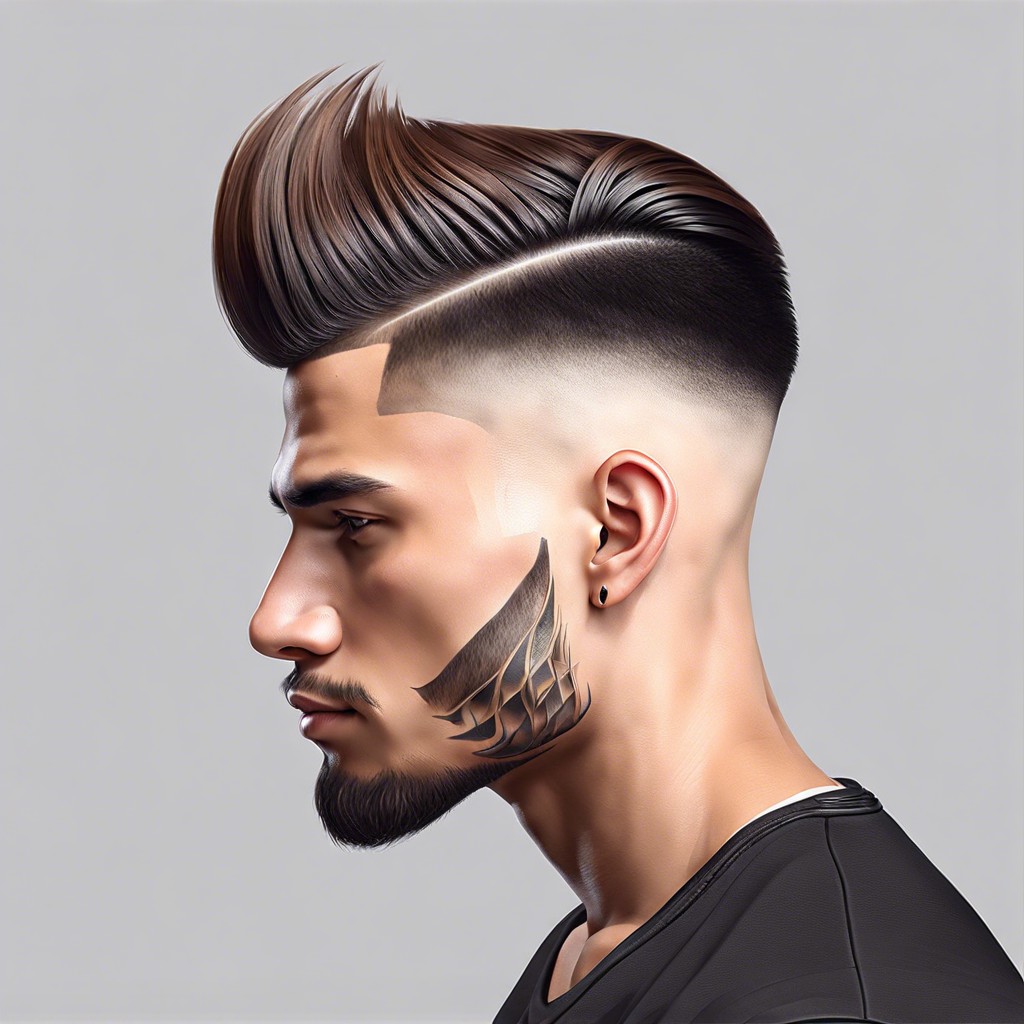
An undercut fade combines the boldness of the classic undercut with the gradual transition of a fade. This style creates a striking contrast by keeping the sides ultra-short or even shaved while leaving the top longer. It’s an edgy choice that brings a modern twist to traditional short sides, long top hairstyles.
Mohawk Fade
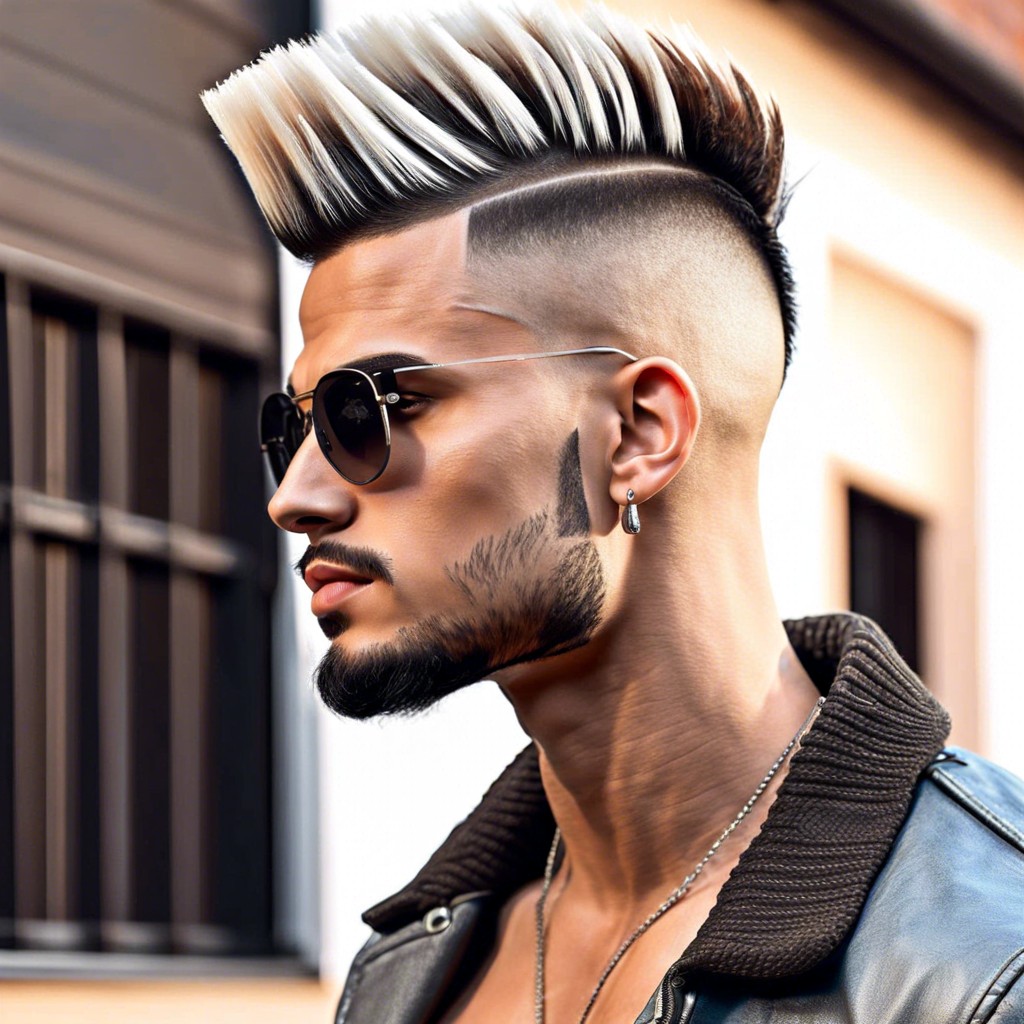
The Mohawk Fade blends the edginess of a Mohawk with the cleanliness of a fade, creating a stark contrast and bold statement. This style progressively diminishes the hair on the sides to the skin, drawing all attention to the strip of longer hair atop the head. It’s a modern twist that suits those looking to make a daring fashion statement, offering a range of customization in terms of length and texture for the central strip of hair.
Burst Fade

A burst fade offers a stylish transition that arcs around the ear, often accentuating curly or textured hair types. It’s commonly paired with a mohawk or a faux hawk to draw attention to the dramatic hair on top. This fade type provides a less conventional, more distinctive look compared to traditional fades, setting a trend-forward edge.
Brooklyn Fade

The Brooklyn Fade, also known as the Blowout, is characterized by its pronounced transition that makes a statement. It starts with significantly longer hair on top that abruptly shortens as it nears the ear line, giving a stark contrast. This style is particularly popular for those looking to add an edgy, urban vibe to their appearance.
Shadow Fade
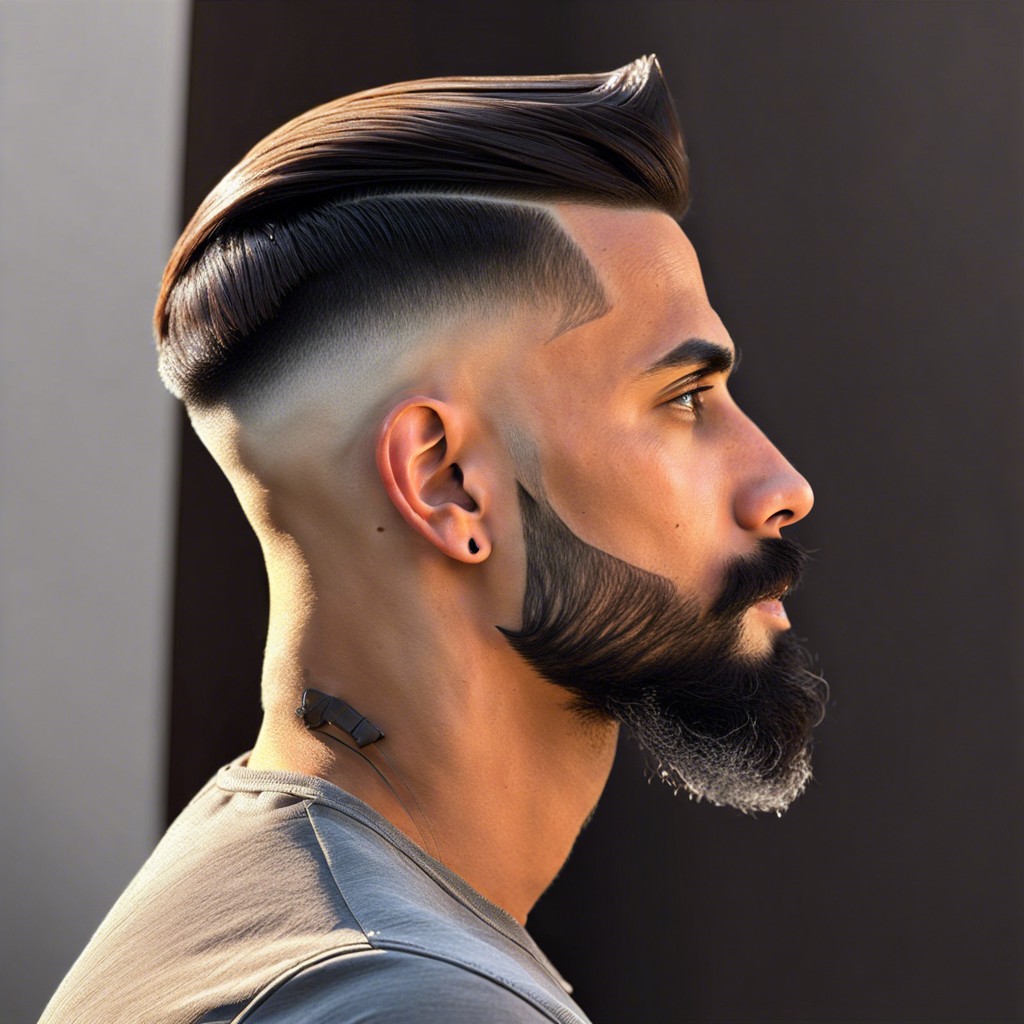
A shadow fade is known for its subtle transition, where the hair gradually changes from slightly longer at the top to shorter at the sides. It’s a softer approach compared to more dramatic fades, making it ideal for those seeking a less stark contrast in their haircut. This style effectively blends a touch of classic with modern, suitable for various professional and casual settings.
